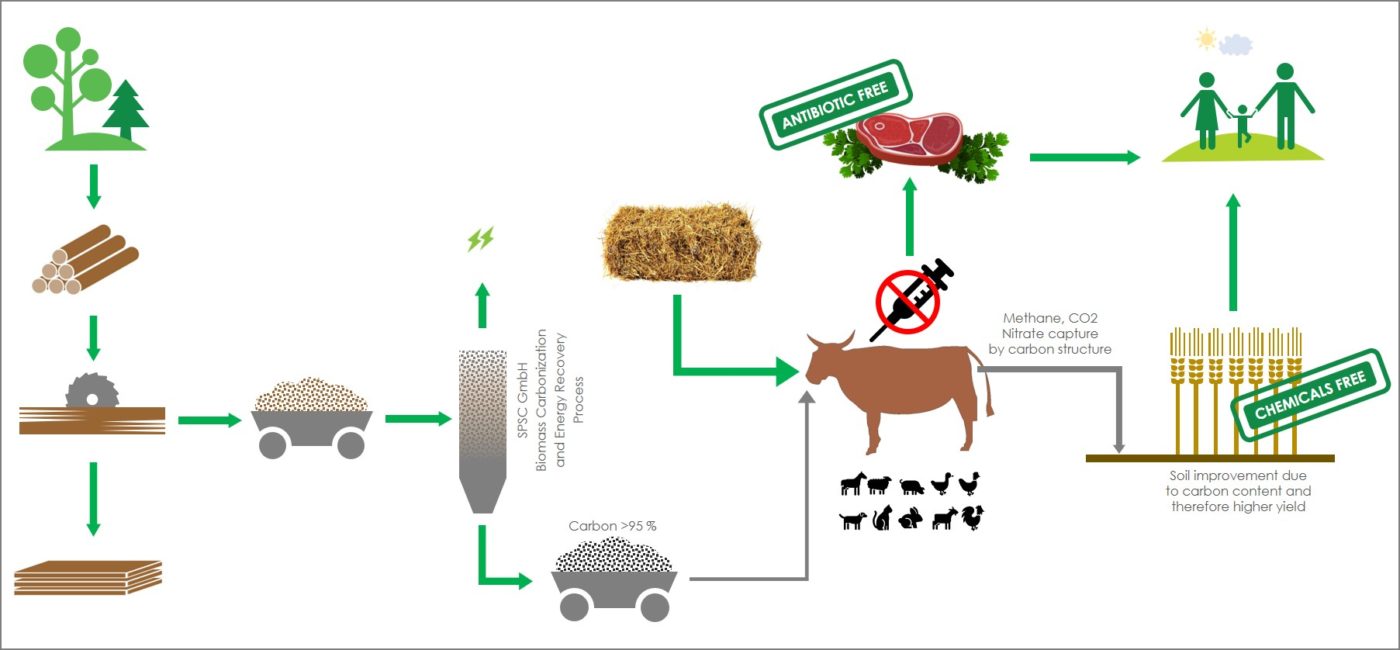Biochar is one of the most promising and environmentally friendly substances, with its range of applications growing year by year. Products made from biochar are used in traditional agriculture, energy production, and the manufacturing metal industry. Biochar has also successfully established itself in medicine, animal husbandry, and the food industry.
By using biochar as a fuel, the amount of greenhouse gas emissions into the atmosphere can be significantly reduced. The ongoing transition from traditional materials to a new type of energy source leads to a significantly improved global climate. Biochar promotes the vision of a clean environment, which is shared by many international ecologists. Further successes have also been achieved in other business and application areas:
- In medicine and veterinary medicine, drugs based on biochar are developed, which help in the treatment of food poisoning and the most common gastrointestinal diseases. These drugs are available on the market for both humans and animals.
- For agriculture, various plant fertilizers, enriched soils (Terra Preta), and many other biological conditioning agents for agricultural crops are produced based on biochar.
- In animal husbandry, feed additives made from biochar are used to enhance defense against digestive disorders. Biochar also has a positive effect on the growth rate of animals.
- In the food industry, biochar serves as a natural filter in the production and extraction of drinking water, as a natural dye, and also helps reduce excess moisture in certain products, thus extending their shelf life.
In addition to its many positive characteristics and wide range of applications, biochar is also known for its environmental friendliness and cost-effectiveness. Despite its name, biochar has nothing in common with natural charcoal. It requires a considerable amount of time, effort, and expensive equipment to extract this mineral.
Biochar is a product of the pyrolysis (thermal decomposition) of plant resources, which can be obtained with minimal time, cost, and apparatus. These production advantages make biochar attractive for investments and its use in large industrial sectors.


 Deutsch
Deutsch